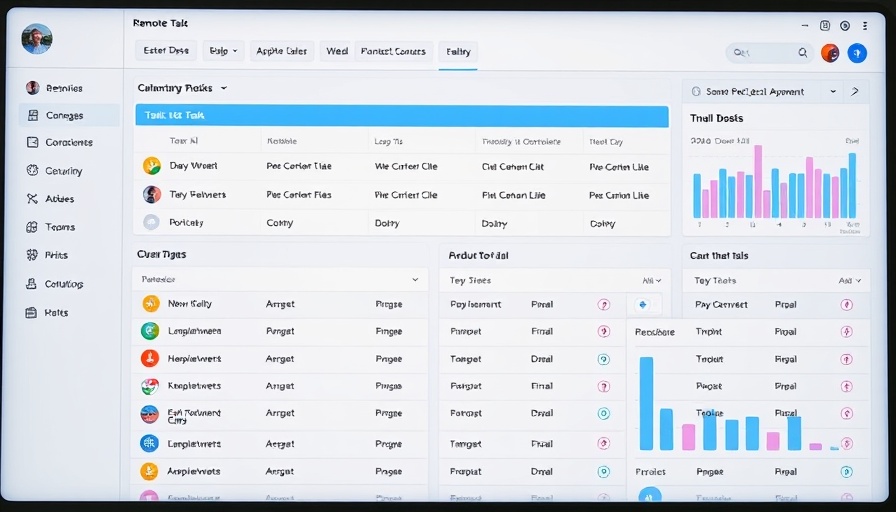
Building a Lasting Remote Company Culture: The Essentials
As remote work steadily becomes the norm, fostering a strong company culture in a digital environment is critical for businesses looking to scale. For owners of mid-sized businesses generating $2M to $10M+ in annual revenue, implementing effective company culture can significantly improve collaboration, enhance productivity, and attract funding. A strong remote company culture provides a sense of belonging, even from a distance.
Key Elements of a Successful Remote Culture
The foundation of a thriving remote culture lies in trust, communication, and recognition. Encouraging open communication helps build trust among teams, while recognition fosters inclusivity and teamwork. Important project management software tools can streamline these efforts, enabling better collaboration on product development and workflows. For instance, tools like ClickUp, Slack, and Trello allow team members to share updates and maintain visibility over processes, helping break down barriers created by distance.
Creating Effective Processes for Team Engagement
One of the largest challenges businesses face is ensuring that team engagement remains high. Regular check-ins, team-building activities, and informal virtual meetups build on the essence of community. Encourage teams to share personal accomplishments or moments to enrich collaboration. Surveying employees about their preferences can lead to better decision-making in terms of useful processes that sustain engagement.
Innovative Workflows That Enhance Productivity
Operational efficiency is crucial, particularly for scaling operations. Identifying and leveraging workflows that optimize daily tasks can transform chaotic environments. Automating repetitive tasks frees up time for teams to focus on strategic initiatives. Tools that integrate with project management software can provide templates for effective project execution, ensuring teams remain aligned while working towards shared objectives.
Counterarguments: The Challenges of Remote Culture
Despite the undeniable benefits, some may argue that establishing a remote culture is challenging due to communication barriers or feelings of isolation among employees. However, nurturing relationships, prioritizing mental health, and cultivating a sense of belonging can mitigate these challenges. In reality, it’s the intentionality behind the processes and interactions that ultimately define a successful remote culture.
The Future of Remote Work Culture: Predictions and Opportunities
Looking ahead, as remote work becomes more entrenched, businesses that prioritize their culture will attract top talent and investment. Innovative companies will develop new strategies to adapt to evolving work environments, combining in-person interactions with remote flexibility. Those that navigate this landscape successfully will not only thrive but lead their industries.
In conclusion, building a strong remote company culture isn’t just possible—it’s essential for lasting success. By adopting the right tools and processes, fostering connections, and strategizing for the future, remote teams can evolve into cohesive units that drive their business forward. If you’re eager to enhance your company culture, assess your existing workflows and consider what tools might help facilitate better collaboration and operational efficiency.
 Add Row
Add Row  Add
Add 



Write A Comment